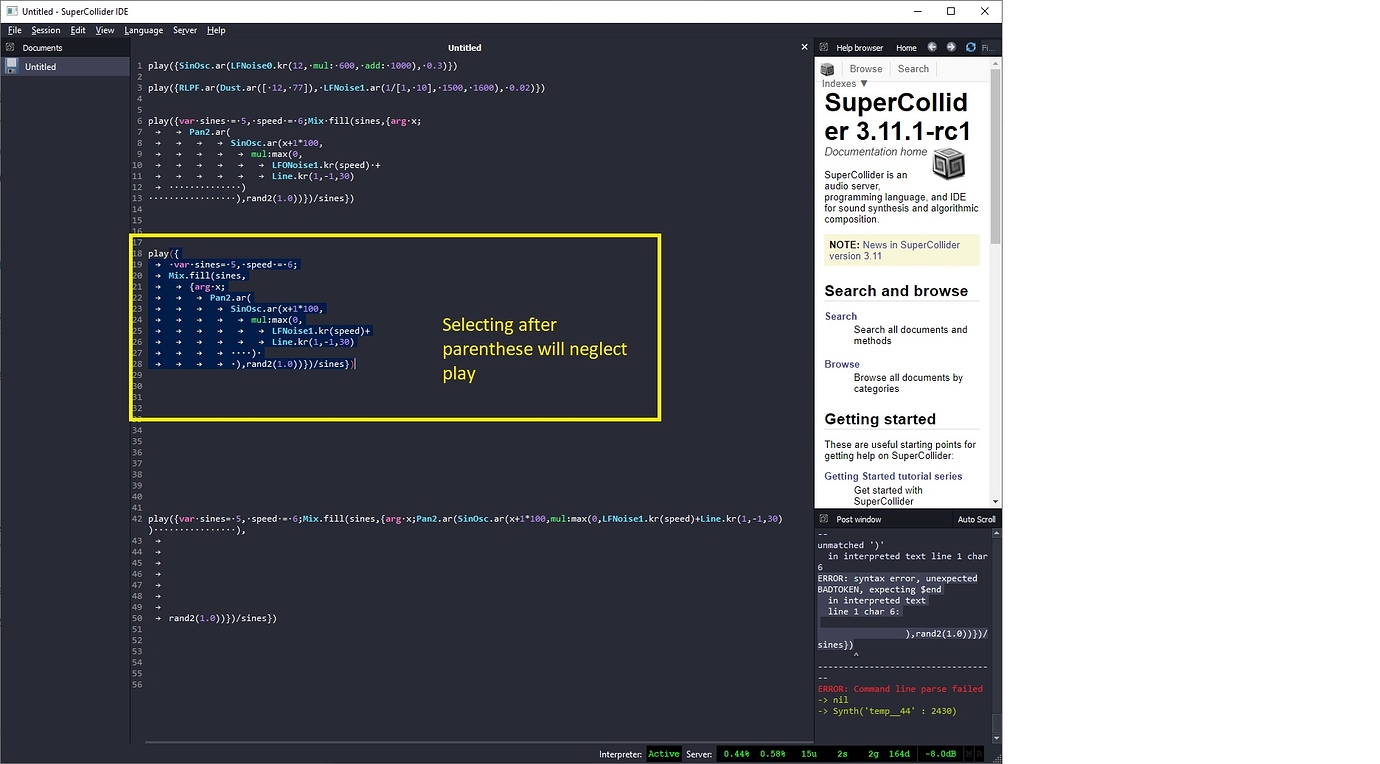
SuperCollider, first developed by James McCartney, is an accessible blend of Smalltalk, C, and further ideas from a number of programming languages. With contributions from top academics, artists, and technologists that cover topics at levels from the introductory to the specialized, it will be a valuable sourcebook both for beginners and for advanced users. The SuperCollider Book is the essential reference to this powerful and flexible language, offering students and professionals a collection of tutorials, essays, and projects. SuperCollider is one of the most important domain-specific audio programming languages, with potential applications that include real-time interaction, installations, electroacoustic pieces, generative music, and audiovisuals. Students will have access to alternatives to synchronous (in person or remote) participation if conditions require.The essential reference to SuperCollider, a powerful, flexible, open-source, cross-platform audio programming language. (Unfortunately, headphones and computer speakers do not transmit low frequencies very well.) Students can expect our remote teaching to be around a 12/2 blend of asynchronous (self-paced) and synchronous (scheduled) coursework, using Zoom and Canvas. Access to good quality speakers is very important. To successfully participate in this program, students will need access to reliable internet service, and a desktop or laptop computer with a modern web browser.
#Supercollider book series
There will be a series of quizzes each quarter on signal processing, acoustics, and programming. And there will be regular readings and listening assignments. There will be group research presentations on acoustics (fall quarter) and on music history (winter quarter). This will be a project-oriented class, in which students will be expected to create 3 or 4 individual projects (compositions) each quarter. This book has many acoustic examples of compositions, written from the 1950s up through 2010. We’ll be using the bookĬomposing Electronic Music: A New Aestheticīy Curtis Roads, published by Oxford University Press. However, I will be accepting 4-credit ILCs that will address the history of aesthetics and the development of electro-acoustic music, from its beginnings in the early part of the 20th century up to the present. Benade, and published by Dover Editions.ĭuring the Spring Quarter, the class will go down to 12 credits. This knowledge is intended to help students when building their own synthesis algorithms in programming. We'll be studying the acoustical properties of string instruments, wind instruments, percussion, and others. (published by the MIT Press in 2011) for both the winter and the spring quarters.Īlongside this study, will be the study of the acoustic principles of instruments. This involves learning the mathematics behind the building of simple waveforms, learning the fundamentals of digital filters and reverberation, frequency and amplitude modulation, and slowly moving on to learn more advanced topics such as Fourier transforms and convolution.

In learning SuperCollider, we'll also be studying the basics of Digital Signal Processing.


It survives today in a freely available form, and is used for the generation of both pop (or dance) music, as well as for experimental research in music composition. The synthesis language SuperCollider was created about fifteen years ago. Aesthetics and the History of Electro-Acoustic Music.In our class, we will study the underlying principles of sound production by a computer, including some of the mathematics of digital signal processing and acoustics. However, the underlying scientific principles have remained the same since the early 1950s, when first occurrences of digitally generated sound and computer assisted music composition were made. Computer synthesis programs have been commercially available since the 1990s. The function of the computer in the creation of music has been wide-spread since the 1980s. We will be using the synthesis language SuperCollider, which is a programming language for sound synthesis and music composition. This two-quarter program will address the fields of computer music, acoustics, and creativity.


 0 kommentar(er)
0 kommentar(er)
